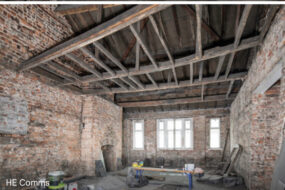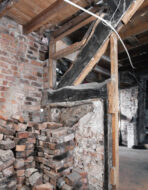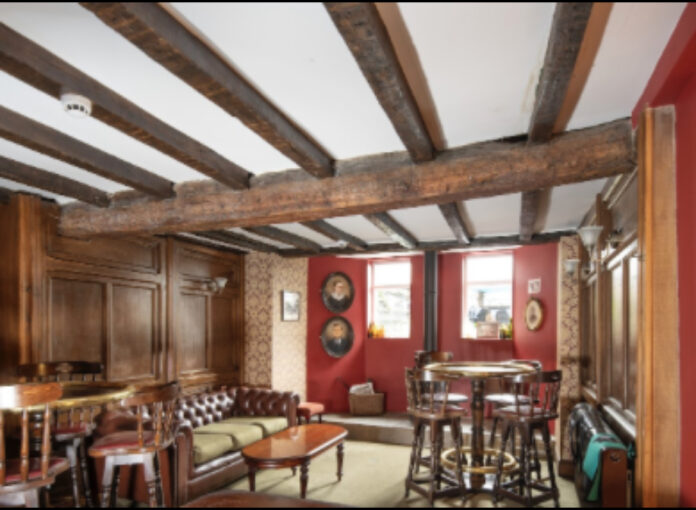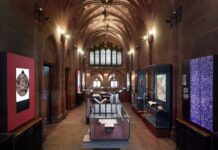The Angel Inn at 20-22 Market Place, Stockport has been added to the National Heritage List for England at Grade II by the Department for Culture, Media and Sport, on the advice of Historic England.
Built in the 16th century, several timbers within the inn’s wooden frame date from the 15th century when The Wars of the Roses raged between the Houses of Lancaster and York. Rare surviving wattle-and-daub – a technique that had died out by the 18th century – fills gaps in the building’s frame.

Historic England has used dendrochronology – a modern method of dating wood – on a sample of the inn’s floorboards, which has proved that one was cut from a tree that was alive in 1086, the year the Domesday Book was completed. This floorboard was probably cut for an earlier building on the site.
The inn’s long history reflects the story of Stockport’s development over several centuries. Records show the name “Angel Inn” dates from as early as 1769, though the site’s hospitality roots extend further, with references to “Cotterell’s inn” used for sequestrators’ meetings in the 1640s, who met to organise the confiscation of property of supporters of King Charles I during The English Civil War.

During the late 18th and early 19th centuries, the inn became a cultural hub, hosting meetings, concerts and theatrical performances, particularly by the Stockport Philharmonic Society in a purpose-built function room.
By the mid-19th century, the building had been divided into three separate commercial units. Number 22 became home to R.H. Rostron, a prominent Stockport draper after whom Rostron Brow (leading to the marketplace) is named. Number 21 was partially occupied by Samuel Chadwick, a wholesale tea and coffee dealer.
The elaborate plasterwork façade added in 1886, designed by architect TH Allen – who also designed the Grade II listed Bank of Stockport opposite – features angel heads with wings forming window keystones, a nod to the building’s long history as the Angel Inn.
Crispin Edwards, Historic England Listing Adviser, said:
“The Angel Inn not only preserves historic timbers and building materials from the 16th century and earlier, but its later alterations also tell the story of its development from inn to cultural venue to multi-use commercial property. The survival of a floorboard from a tree that was growing during the time of the Domesday Book is truly remarkable.”
The owner, Gemma Allen-Muncey of Spare Room, said:
“We’re delighted that The Angel Inn’s historical significance has been nationally recognised. We loved the building the second we walked through the door and have enjoyed working with Historic England to ensure that the original features that make it such a special place have been carefully conserved. The original inn building now hosts two bars and office space, and this listing ensures that its unique heritage and place in Stockport’s history will be protected for future generations to appreciate and enjoy.”
Navendu Mishra MP for Stockport said: “The listing of The Angel Inn as a Grade II heritage site is a proud moment for our town. It’s one of Stockport’s oldest buildings and has played many roles in the town’s history. From its role in the English Civil War to hosting concerts and community events, The Angel Inn has long been a cornerstone of local life. I’m delighted that its historical and cultural significance is being formally recognised and protected for future generations.”
Stockport Heritage Trust said they were “pleased to acknowledge that another medieval addition to our market place has received the recognition that it deserved with the Grade II listing of the Angel Inn.”







